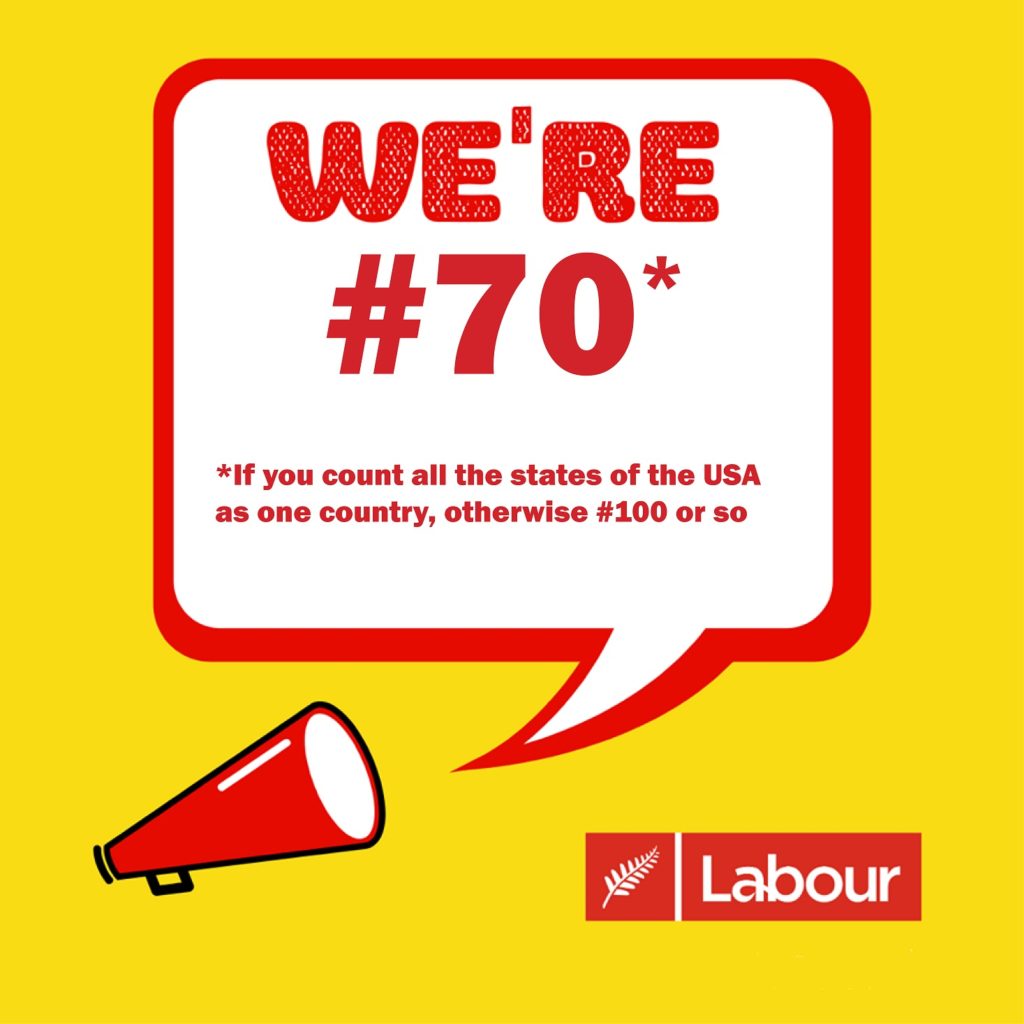
Following overseas trends, it’s apparent that an intense degree of discontentment exists among Western voters. There are protests all over the West – some violent, most confined to the ballot boxes for now. This article explores the possibility that discontentment in New Zealand could see the New Conservative Party get 5% of the vote in this year’s election.
It’s all but official that the neo-Nazi Sweden Democrats are the most popular party in Sweden now. Five opinion polls in a row, all from different polling companies, have established that the Sweden Democrats have more current support than any other party. A moving average of recent polls suggests that their support is at least 25%.
The Sweden Democrats might be the most aggressive of the European alt-right parties, having been founded by former Waffen-SS members. Although it’s not an official position, prominent elements within their membership speak of repatriating everyone of a non-Swedish background. They are taking full advantage of the fact that support for the Social Democrats is at its lowest ever level.
In France, opinion polls suggest that the National Rally’s Marine Le Pen, long decried as an extremist, is threatening to win the French Presidential election in 2022. She is polling equal to Emmanuel Macron on the first round, and is polling at 45% to his 55% on the second. This is well up from Le Pen’s 33% result in the second round of the previous Presidential election.
In Germany, the Alternative fuer Deutschland is polling at around 15%. In the Netherlands, Thierry Baudet’s Forum for Democracy is the second-strongest party right now, having briefly been the strongest earlier this year. In Italy, the nationalist Lega Nord is now dominant. In Spain, the right-wing populist bloc is now polling at 17%, up from 10% in the general election less than a year ago.
The mainstream New Zealand media will never report on any of this.
The reason for all this discontent is the increasingly apparent failure of the Establishment to manage the Western World in a way that reduces the suffering of the Western people. The ruling class of the West transparently stopped giving a fuck about their people’s suffering many years ago, and the ensuing resentment has become bitter.
The mass immigration to Europe of Muslims and Africans over recent decades has heavily lowered the standard of living of the average European citizen. On the flipside, however, it has generated immense profits for those who benefit from this suffering. Those with an interest in hiring cheap labour, selling accommodation to the highest bidder or profiting from ethnic strife and division have seen their stocks rise handsomely.
This oversupply of cheap labour has made it all but impossible for young, working-class people to get into a position where they own a home suitable to raise a family in. Young people in New Zealand have less than 40% of the house-buying power that their parents had, and it’s getting worse. Most aggravating of all, the Western Establishment has shown no interest in changing this state of affairs.
This refusal to change course, when the current course only benefits 5-10% of the population, is the ultimate reason for most of the current discontent in the Western World. We can conclude from the examples in Europe that any party taking a meaningful stand against the New Zealand Establishment has the potential to win up to 25% of the vote.
The New Conservatives are the most prominent of the parties on the right that oppose the Establishment. Therefore, they are the only party appealing to the Kiwi equivalents of the Sweden Democrats, National Rally, Liga Nord etc. voters. Their constituency is angry, white, rural and male – the same demographic that won the World Wars.
It’s obvious to most by now that there is no meaningful difference between National and Labour, both being business-as-usual neoliberals whose overriding concern is keeping the economy going at full tilt.
The big problem is that there’s no meaningful difference between these two parties and any of the Greens, ACT or New Zealand First. The Greens are even more globalist than Labour, and ACT are even more globalist than National. For anyone who opposes globalism the traditional choice has been New Zealand First, but their close co-operation with Labour and the Greens has now made clear to all that they are as globalist as the rest.
In the minds of most dissenters, this leaves few options. Leftist discontents have been fond of throwing a vote towards the Aotearoa Legalise Cannabis Party, and no doubt many who turn out for the cannabis referendum will do so again this year. Most of the discontent at the moment, however, is inspired by right-wing sentiments, and people motivated by this tend to despise cannabis users and consider them subhuman.
For the right-wing discontents, the realistic options are ACT and New Conservative.
As this column has previously argued, ACT could get 5% if they were willing to step into the alt-right niche, instead of merely following puppy-like behind the National Party. However, they are clearly not willing. ACT is perfectly comfortable being the party of big-money corporate neoliberals, because that ensures that they get plenty of funding. David Seymour flirts with anti-Establishment positions, but his heart isn’t in it.
For this reason, the New Conservatives are the only party that are primed to take advantage of the wave of discontent that is sweeping the West.
At the time of the most recent poll, the New Conservatives apparently had less than 1% support. However, that poll was almost two months ago. Since then, several things have happened, and all of them follow the general trend of stoking discontentment towards the Establishment. If they keep happening – if that great wave of populist discontent reaches New Zealand – the New Conservatives might rise all the way to 5% before September 19.
As Dan McGlashan showed in Understanding New Zealand, there is a very strong correlation between voting Conservative and voting National (0.77), and therefore a strong New Conservative vote is likely to significantly weaken the National vote. If it does, it will not shift the balance of power in 2020. In fact, it could even strengthen Labour’s position if the New Conservatives get less than 5%, thereby causing the votes of many people who would otherwise have voted National to be wasted.
The far-right populists have shown in Europe that, in times of high discontentment, it’s possible for them to attract voters from otherwise left-wing demographics. New Conservative will attract anti-Establishment voters from National, but they could also attract a significant number of voters from those who would otherwise have cast their lot in with Labour, New Zealand First or ACT. If they succeed at this, New Zealand could be in for an electoral surprise in September.
*
If you enjoyed reading this essay, you can get a compilation of the Best VJMP Essays and Articles of 2019 from Amazon for Kindle or Amazon for CreateSpace (for international readers), or TradeMe (for Kiwis). A compilation of the Best VJMP Essays and Articles of 2018 and the Best VJMP Essays and Articles of 2017 are also available.
*
If you would like to support our work in other ways, please consider subscribing to our SubscribeStar fund.



